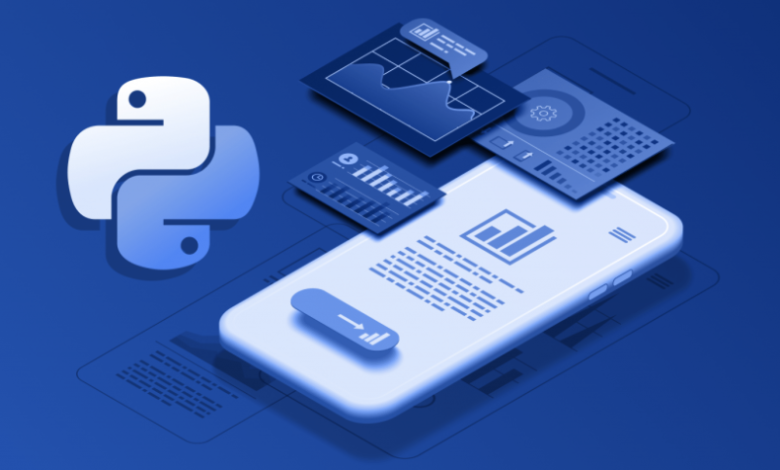
In the modern digital race, companies must deliver features at startup speed while interpreting data and applying intelligence in real time. Yet behind the scenes, most struggle with a tangled web of technologies, where one framework is for the backend, another for analytics, and a separate stack for AI. Every layer works in isolation, which slows down progress and creates fragile systems that resist scaling. But Python development changes this story.
In our article, we explore the reasons why developer teams pick Python to build scalable web applications, streamline data workflows, and deploy AI solutions.
7 reasons to choose Python for web development
In enterprise software today, the languages that prevail are those that combine velocity and versatility, and Python remains firmly in that lead, being used by over 51% of developers and among the top three most popular languages worldwide.
Modern engineering teams use Python for web development to ship secure APIs, data-heavy backends, and AI-ready features without juggling multiple stacks. As products grow, they need one consistent approach to architecture and delivery. Many organizations formalize this with Python development powering growth, aligning architecture, analytics, and automation under clear engineering standards. To keep that discipline in place, businesses develop their in-house expertise or can partner with experienced Python development companies that enforce code conventions, tune databases, add observability, and maintain strong test coverage. With professional Python development services, teams shorten release cycles, improve performance, and scale predictably.
Below are the reasons Python for web development remains the choice for high-growth products.
Clean, readable, and fast to learn
Python’s syntax is concise and intuitive, so your teams can deliver production-ready features faster. Moreover, developers spend less time debugging syntax and more time solving real problems. That simplicity also reduces onboarding time, so that even large teams can align on code conventions just in days.
Powerful and flexible frameworks
Frameworks for Python app development handle everything from simple prototypes to enterprise-grade systems. For example:
- Django offers a complete, ready-to-use structure for authentication, ORM, and security, which benefits large, data-heavy platforms.
- FastAPI and Flask are ideal for lightweight, modular builds that emphasize speed and scalability.
Scales seamlessly
Python is behind some of the world’s most demanding systems, like Instagram, Spotify, and Netflix, among them. Its frameworks support horizontal scaling, caching layers, and asynchronous I/O, enabling millions of daily requests with consistent response times. Whether it’s a startup app or a global service, Python scales without costly rebuilds.
Built-in security and reliability
Security is baked into Python’s major frameworks. Django automatically mitigates SQL injection, cross-site scripting (XSS), and clickjacking risks. Combined with strong community auditing, security updates are frequent and reliable, which means businesses can focus on growth instead of firefighting vulnerabilities.
Backed by a global developer community
Python’s vast open-source ecosystem means you’re never building alone. With thousands of maintained packages and active forums, solutions to most challenges already exist. That collective intelligence accelerates development and ensures long-term stability.
A global talent pool and lower hiring risk
As Python is widely used and easier to learn, companies find it easier to hire and onboard developers quickly compared to some specialized languages. Its simple syntax helps new engineers adapt quickly, which reduces both ramp-up time and long-term training costs.
Interoperability and integration capabilities
Python is also a bridge language that connects services built in other technologies, from Java-based microservices to C++ data engines. Due to this, companies unify different systems without major rewrites, which results in improved data flow and operational consistency.
5 Reasons to use Python for data science
Data drives everything from marketing strategy to supply chain optimization, but you have to switch between too many tools and languages, and here’s where Python eliminates that fragmentation. But what makes Python so beneficial for data handling?
A universal tool for data workflows
Python is a single environment where you collect, clean, and transform data. As it’s simple to use, your developers and data scientists can finish their tasks faster, while its flexibility supports both small and enterprise-scale projects. Whether processing financial reports or customer behavior logs, Python keeps the workflow consistent from ingestion to insight.
Libraries for data handling
Python’s ecosystem includes libraries designed for every stage of data analysis:
- Pandas and NumPy for data manipulation and numerical computing.
- Matplotlib and Seaborn for customizable visualizations.
- Dask and PySpark for handling distributed, large-scale datasets.
Effortless ETL
Python is widely used to build ETL pipelines that extract data from multiple sources, clean and transform it, and then load it into storage or analytics platforms. In their turn, developers can connect these pipelines directly to APIs, databases, or web applications, to make insights stay current across the system. The same code that prepares data can also generate reports or feed results into machine-learning models, so that it reduces duplication and helps your team keep analytics close to production.
Automation and real-time reporting
Teams use Python for data science to automate report generation and real-time analytics. Pipelines can pull data from multiple sources overnight, process it, and publish dashboards by morning, so that no manual intervention from your engineers is needed.
Turning data into decisions
Python unites everyone around a single source of truth. Data engineers collect and structure information, analysts turn it into dashboards and reports, and managers use those insights to act before issues grow. Developers feed the results back into web or AI systems, so each decision improves the product in real time. With Python driving this cycle, teams stay aligned, move faster, and maintain consistent results.
5 reasons companies choose Python for AI and ML projects
Code everyone understands
AI projects only move fast when people can actually understand each other’s work, and Python’s simple, readable syntax makes that possible. Data scientists, engineers, and analysts can all work in the same codebase without tripping over complexity or spending hours untangling logic. That shared clarity keeps development steady, reduces time lost to debugging, and lets teams focus on improving models instead of fighting the code.
Libraries for every AI challenge
Python for AI covers the entire pipeline.
- NumPy and Pandas handle data preparation.
- TensorFlow, PyTorch, and Keras train and deploy deep-learning models.
- Scikit-learn supports classical ML and predictive analytics.
- OpenCV, NLTK, and SpaCy bring computer vision and natural language processing into production systems.
As a result, teams spend less time reinventing algorithms and more time solving real business problems due to this range of libraries.
Works everywhere you deploy
Python for AI works consistently across various systems (Linux, macOS, or Windows), so models trained in one environment can run anywhere with minimal setup. For IT departments, this means fewer deployment headaches and faster scaling across distributed infrastructures.
See what AI really does
Python’s visualization tools like Matplotlib, Seaborn, and Plotly help teams interpret model behavior and communicate results. Executives can see what a model predicts and why. This transparency builds confidence in AI decisions and supports compliance in regulated industries.
Proven results across industries
Companies rely on Python to run real AI systems that predict risks, detect fraud, and automate diagnostics, which brings real value to businesses. We can see it clearly on different examples. In finance, Python-based models boost fraud detection accuracy by up to 20%, while in manufacturing, predictive maintenance solutions raise productivity by 25%, cut breakdowns by 70%, and lower maintenance costs by 25%.
Final thoughts
In software today, success belongs to the teams that move fast, build efficiently, and make sense of their data. Python supports that kind of progress as it adapts to complex web architectures, handles massive data pipelines, and powers machine learning systems that turn information into real decisions.
For companies, this flexibility means less friction and more control which brings faster development cycles, simpler maintenance, and a cleaner path from idea to implementation. And in a market where speed and clarity define competitiveness, that ability to stay adaptable is what keeps businesses ahead.




